Indonesia
Welcome to Indonesia
Indonesia is a sprawling nation in Southeast Asia known for its rich cultural heritage and stunning natural beauty. From the lush rice terraces and artistic hubs of Bali to the ancient temples of Java, each island presents a unique story and atmosphere. The country boasts spectacular volcanoes like Mount Bromo, pristine beaches, vibrant coral reefs, and diverse wildlife, including the famous Komodo dragons. Indonesia's cultural tapestry is woven with colorful festivals, traditional ceremonies, and a variety of regional cuisines that range from spicy rendang in Sumatra to delicate Balinese dishes. Whether you want to explore bustling markets, dive in some of the world’s best underwater spots like Raja Ampat and Bunaken, or hike through tropical jungles, Indonesia offers endless opportunities for discovery and adventure. The warmth and hospitality of the Indonesian people add to the charm, making visitors feel truly welcome in this enchanting land.
1.
Unparalleled Cultural Heritage: Afghanistan is home to some of the world’s most remarkable historical sites, including the ancient Buddhist statues of Bamyan, the Minaret of Jam, and the stunning mosques of Herat and Mazar-i-Sharif. These sites offer a glimpse into the country’s rich tapestry of civilizations and religious traditions.
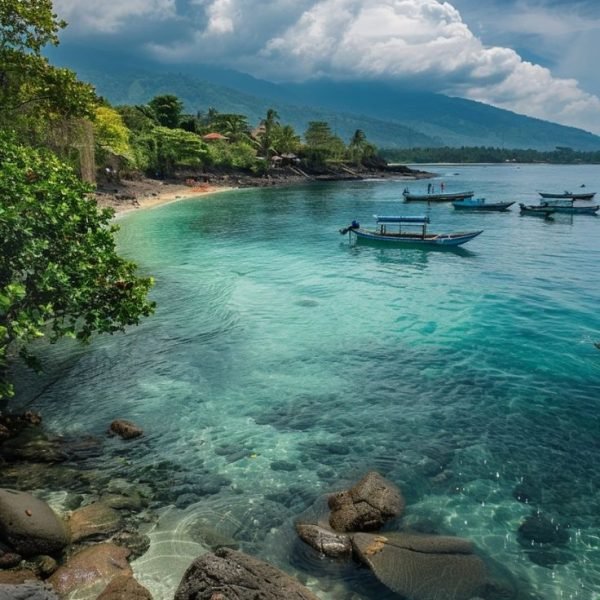
2.
Stunning Natural Landscapes: From the remote Wakhan Corridor in the northeast, ideal for trekking and wildlife spotting, to the dramatic mountain vistas around Bamyan, Afghanistan’s natural beauty is both pristine and awe-inspiring. The country’s varied terrain provides opportunities for hiking, photography, and experiencing traditional rural life.
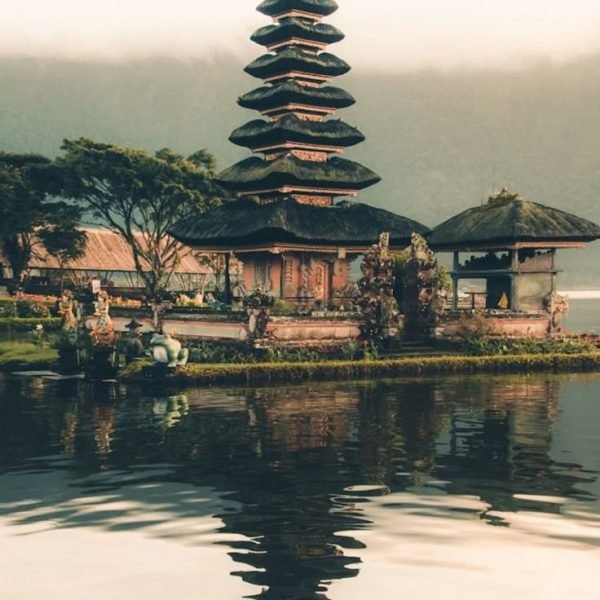
Planning Your Trip
Visa Information
Travelers to Indonesia in 2025 should ensure their passport is valid for at least six months from the date of arrival. Indonesia requires a blank page in the passport for visa stamps, and emergency passports are not accepted. Visa requirements vary depending on your nationality, but many countries benefit from visa-free entry or visa-on-arrival options. It is advisable to check the latest visa regulations before traveling, as rules may change. Additionally, travelers must complete an online customs declaration and be aware of new tourist taxes, such as those recently introduced in Bali. A health-related entry requirement known as SATUSEHAT may also apply, so staying updated with official sources or embassies is essential for a smooth entry.
Best Time to Visit
Indonesia experiences two main seasons: the dry season and the wet season. The dry season, generally from April to October, is the most popular time to visit due to pleasant weather and lower chances of rain. July and August are peak months with larger crowds, so visiting during the shoulder months of May, June, September, and October can offer a more relaxed experience with good weather. The wet season, from November to March, brings more rain and humidity but also greener landscapes, impressive waterfalls, fewer tourists, and often lower prices. Temperatures remain warm year-round, averaging around 28°C, making Indonesia a year-round destination depending on your preferences.
Getting To and Around
Getting to Indonesia
Most international travelers arrive via major airports such as Ngurah Rai International Airport (Bali), Soekarno-Hatta International Airport (Jakarta), Kualanamu International Airport (Medan), or Minangkabau International Airport (Padang). These hubs are well connected to major cities worldwide, with daily direct flights from many international locations. Budget airlines like AirAsia offer affordable regional connections, making it easy to reach Indonesia from neighboring countries.
Getting Around Indonesia
Indonesia’s vast geography means traveling between islands is often necessary. The fastest and most convenient way to move between major islands is by domestic flights, with airlines such as Garuda Indonesia and Lion Air providing frequent services. Ferries also connect many islands and offer scenic travel options, for example, between Java and Bali or to the Gili Islands. On smaller islands and rural areas, renting a scooter is a popular and flexible way to explore. In larger cities like Jakarta, Denpasar, and Medan, e-hailing services such as Grab and Gojek provide convenient and affordable transportation options.
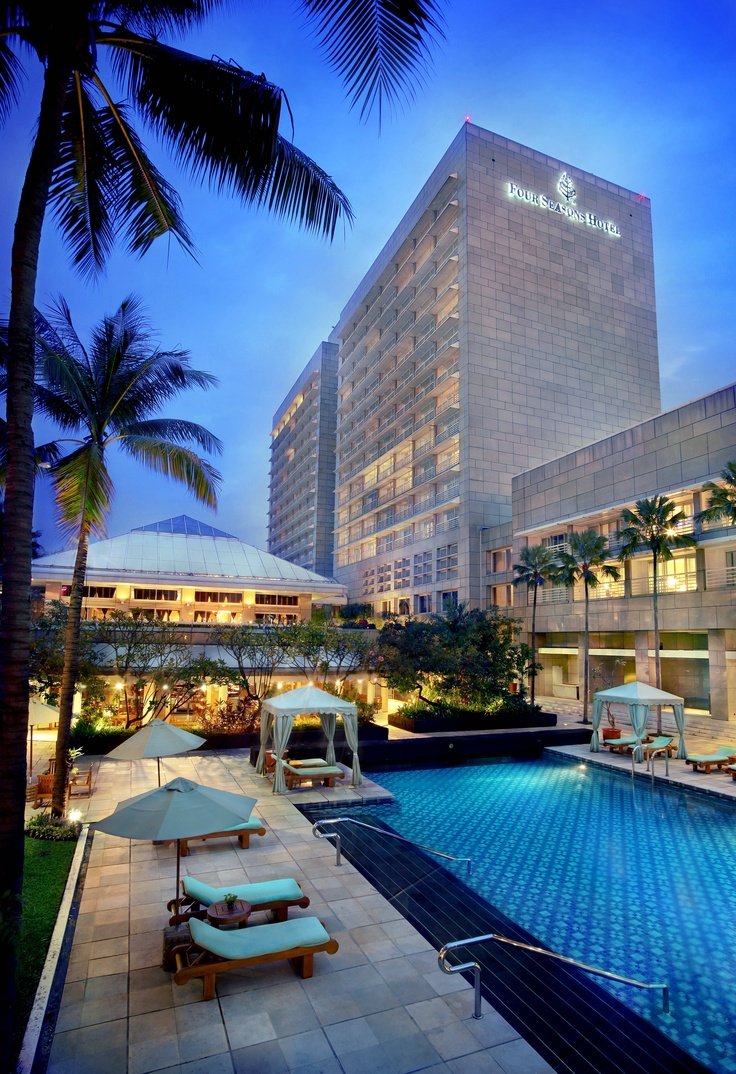
Accommodation
Indonesia’s accommodation landscape is as varied as its islands, ranging from ultra-luxurious resorts and boutique hotels to budget-friendly hostels and homestays, ensuring every traveler finds the perfect place to rest and recharge.
Accommodation Options
Luxury and Boutique Hotels
For travelers who desire comfort and indulgence, Indonesia boasts numerous luxury resorts and boutique hotels, especially in popular destinations like Bali, Jakarta, and Lombok. These properties often feature stunning architecture inspired by local culture, exquisite gardens, infinity pools, spa facilities, and personalized services.
- Bali is renowned for its high-end resorts such as COMO Uma Canggu and Ayodya Resort Bali, which offer tranquil beachfront settings, world-class amenities, and exceptional dining experiences. Many luxury resorts provide wellness programs, yoga retreats, and cultural activities, allowing guests to immerse themselves fully in the Balinese way of life.
- In Ubud, resorts like Padma Resort Ubud and Maya Ubud Resort & Spa combine lush jungle surroundings with elegant design, perfect for travelers seeking peace and nature without sacrificing comfort.
- Mount Bromo and surrounding areas offer mid-range hotels and resorts with spectacular views of the volcano and easy access to national parks, ideal for adventure travelers who want a comfortable base after trekking.
Mid-Range and Budget Options
Travelers on a moderate budget will find plenty of quality hotels, guesthouses, and boutique hostels across Indonesia. Cities like Jakarta, Yogyakarta, and Medan have numerous mid-range hotels that blend convenience with comfort, often including breakfast and Wi-Fi.
- Guesthouses and homestays provide authentic local experiences, allowing visitors to connect with Indonesian families and communities. These options are especially popular in less touristy areas and offer a glimpse into everyday Indonesian life.
- Boutique hostels are increasingly popular among backpackers and solo travelers, offering private rooms with modern amenities at affordable prices. Many hostels also organize social events and tours, making it easy to meet fellow travelers.
Unique Stays and Eco-Lodges
For eco-conscious travelers, Indonesia offers eco-lodges and sustainable accommodations that emphasize environmental responsibility without compromising comfort. These are often found in Bali, Lombok, and remote islands, featuring solar power, organic gardens, and waste reduction initiatives.
Tips for Booking Accommodation
- Book early for peak seasons (July-August and December-January) to secure the best rates and availability.
- Consider location carefully: beachfront resorts offer stunning views but may be pricier, while staying in town centers or near transport hubs can be more convenient.
- Many hotels include breakfast, which can be a great way to start your day with local flavors.
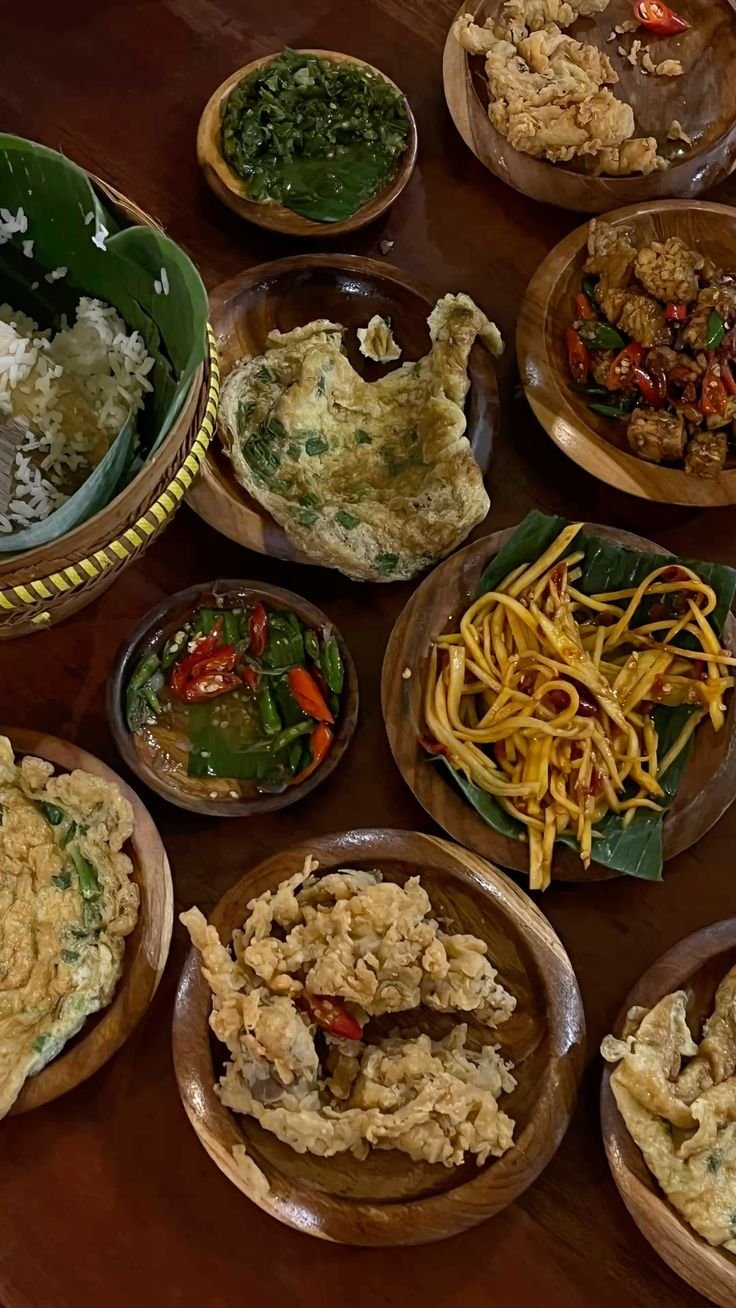
Food and Drink
Indonesian cuisine is a vibrant reflection of its cultural diversity, offering a rich palette of flavors, aromas, and textures. Food is a central part of the travel experience here, ranging from street food stalls to fine dining restaurants.
Must-Try Indonesian Dishes
- Nasi Goreng: Indonesia’s famous fried rice, often served with a fried egg, chicken, or prawns, and a side of pickles and crackers. It’s a staple breakfast dish but enjoyed any time of day.
- Satay: Skewered and grilled meat served with a rich peanut sauce. Variants exist across the islands, including chicken, beef, and even seafood.
- Gado-Gado: A healthy and colorful salad of boiled vegetables, tofu, tempeh, and hard-boiled eggs, topped with a spicy peanut sauce.
- Rendang: A slow-cooked beef dish from Sumatra, rich in spices and coconut milk, known for its deep, complex flavors.
- Soto: A traditional soup with meat, vegetables, and aromatic spices, perfect for a comforting meal.
Dining Experiences
- Warungs: Small family-run eateries offering authentic and affordable Indonesian meals. Warungs are perfect for tasting local dishes like nasi campur (mixed rice) or mie goreng (fried noodles) for just a few dollars.
- Night Markets: Cities such as Jakarta, Yogyakarta, and Denpasar host bustling night markets where you can sample a variety of street foods, from grilled corn and satay to sweet treats like pisang goreng (fried bananas).
- Fine Dining: Indonesia’s major cities and tourist hubs feature international and fusion restaurants where chefs creatively blend Indonesian ingredients with global culinary techniques.
Drinks and Refreshments
- Teh Botol: Sweetened jasmine tea served cold, a popular drink throughout Indonesia.
- Es Campur: A refreshing dessert drink made with shaved ice, coconut, jelly, and fruits.
- Coffee: Indonesia is famous for its coffee, especially varieties like Kopi Luwak and Sumatra Mandheling. Enjoy a cup at local coffee shops or cafes, which are abundant in cities and tourist areas.
- Fresh Tropical Fruits: Markets and street vendors offer an abundance of fresh fruits such as mangosteen, rambutan, durian, and papaya, perfect for a healthy snack.
Eating on a Budget
Indonesia is a paradise for budget travelers who want to eat well without breaking the bank. Warungs and street food stalls offer delicious meals for under $3, making it easy to enjoy authentic flavors daily. Fresh markets are also great for picking up tropical fruits, snacks, and local delicacies at low prices.
Food Safety Tips
- Opt for busy warungs and street stalls where turnover is high to ensure freshness.
- Drink bottled or filtered water and avoid ice from unknown sources.
- Wash hands before eating and use hand sanitizer when necessary.

Must-See Attractions
- Borobudur Temple, Central Java
Borobudur is the world’s largest Buddhist monument and a UNESCO World Heritage site. This 9th-century temple features nine stacked platforms adorned with 2,672 relief panels and over 500 Buddha statues. Situated on a hilltop near Yogyakarta, Borobudur offers panoramic views of Mount Merapi and the lush Kedu Plain. Walking the mandala-shaped path to the top stupa is a spiritual and cultural highlight, making it a must-visit for history buffs and those interested in Indonesia’s ancient heritage.
- Komodo National Park, East Nusa Tenggara
Home to the famous Komodo dragons—the world’s largest lizards—Komodo National Park spans three major islands: Komodo, Rinca, and Padar. Beyond its unique wildlife, the park is a diver’s paradise, boasting vibrant coral reefs, manta rays, and diverse marine life. Visitors can enjoy trekking, snorkeling, and beachcombing on stunning pink-sand beaches. Labuan Bajo serves as the gateway to this natural wonder.
- Mount Bromo, East Java
Mount Bromo is one of Indonesia’s most iconic volcanoes, rising 2,329 meters above sea level within the Tengger Caldera. Famous for its surreal sunrise views over the Sea of Sand, Bromo offers a dramatic landscape of volcanic craters and rugged terrain. Visitors often combine a jeep tour with a hike to the crater rim, experiencing both adventure and breathtaking scenery. The nearby Tenggerese people celebrate the annual Yadnya Kasada festival here, adding cultural richness to the visit.
- Bali’s Cultural and Natural Gems
Bali continues to be Indonesia’s top tourist destination, known for its stunning beaches, lush rice terraces, and vibrant arts scene. Ubud, Bali’s cultural heart, offers serene walks through terraced rice fields like Tegalalang, visits to art galleries, and traditional dance performances. For beach lovers, spots like Kelingking Beach on Nusa Penida feature dramatic cliffs and crystal-clear waters. Bali also offers world-class surfing, wellness retreats, and lively nightlife.
- Raja Ampat, West Papua
Raja Ampat is a remote archipelago famous for its unparalleled marine biodiversity. With over 1,500 species of fish and coral, it is a top destination for snorkeling and diving enthusiasts. The stunning karst island formations and turquoise waters create a picture-perfect setting for nature lovers and photographers.
- Tana Toraja, Sulawesi
Tana Toraja is renowned for its unique cultural traditions and dramatic landscapes of jungled hills and granite cliffs. The Torajan people maintain elaborate rituals surrounding death and the afterlife, including ceremonies where the deceased remain in their homes for months or years. Visitors can explore traditional villages with intricately carved houses and experience this fascinating cultural heritage firsthand.
- Lake Toba, North Sumatra
Lake Toba is the world’s largest volcanic lake and the deepest in Southeast Asia. Formed by a supervolcanic eruption around 74,000 years ago, the lake is surrounded by lush hills and traditional Batak villages. It’s an idyllic spot for relaxation, cultural exploration, and nature activities such as hiking and boating.
- Prambanan Temple, Central Java
Prambanan is Indonesia’s largest Hindu temple complex, dedicated to the Trimurti gods: Brahma, Vishnu, and Shiva. The 9th-century site features over 200 structures, with towering spires and intricate stone carvings illustrating the Ramayana epic. It is a cultural treasure and a must-see for those interested in Indonesia’s Hindu heritage.
- Jakarta, Java
Indonesia’s bustling capital offers a dynamic mix of modern skyscrapers, historic sites, and vibrant street life. Key attractions include the National Monument (Monas), the old town of Kota Tua, and diverse culinary scenes. Jakarta is also a gateway to exploring other parts of Java and Indonesia.
- Tanjung Kelayang, Belitung Island
Known for its pristine beaches, clear turquoise waters, and unique granite rock formations, Tanjung Kelayang is a hidden gem perfect for beach lovers and photographers seeking tranquility away from crowds.
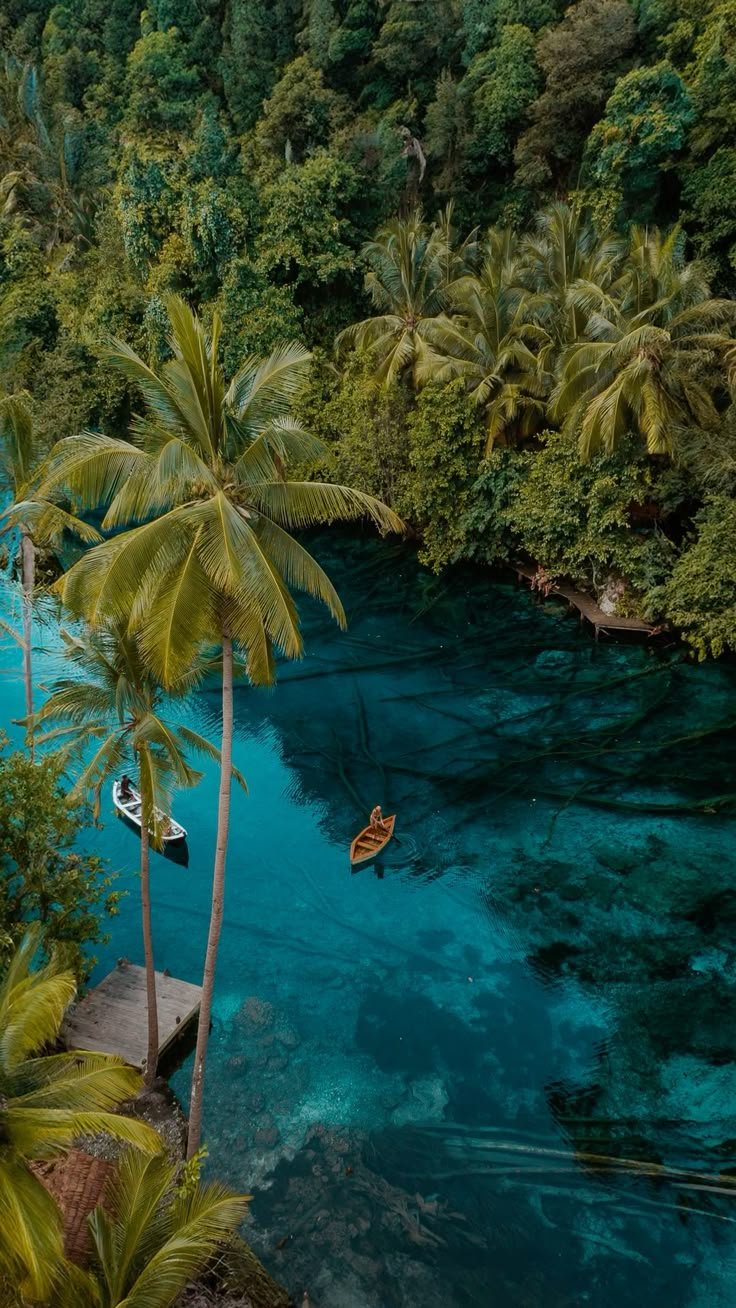
Must-Do Activities
- Sunrise Trekking at Mount Bromo
One of the most iconic experiences in Indonesia is watching the sunrise over Mount Bromo. Visitors typically start before dawn with a jeep ride to a viewpoint, then hike down to the crater rim to witness the spectacular volcanic landscape bathed in golden light. The surreal views of the Sea of Sand and surrounding peaks make this a once-in-a-lifetime adventure.
- Diving and Snorkeling in Raja Ampat and Komodo
Indonesia is world-famous for its underwater biodiversity. Raja Ampat offers some of the best diving in the world, with vibrant coral reefs and abundant marine life. Komodo National Park also provides exceptional snorkeling and diving opportunities, including encounters with manta rays and colorful coral gardens.
- Exploring Ubud’s Cultural Scene
Ubud is the cultural soul of Bali, where visitors can stroll through terraced rice paddies, visit traditional markets, and enjoy performances of Balinese dance and music. The Campuhan Ridge Walk is a popular scenic trail offering lush greenery and peaceful surroundings.
- Visiting Traditional Villages in Tana Toraja
Engage with the unique customs of the Torajan people by visiting their traditional villages. Witness elaborate funeral ceremonies if your timing coincides, explore the distinctive tongkonan houses, and learn about their rich cultural heritage.
- Beach Hopping in Bali and Nusa Islands
Bali and its neighboring islands, such as Nusa Penida and Nusa Lembongan, offer stunning beaches for swimming, sunbathing, and surfing. Kelingking Beach on Nusa Penida is famous for its dramatic cliffs and turquoise waters, while beaches like Seminyak and Jimbaran provide lively atmospheres and beachfront dining.
- Visiting Borobudur and Prambanan Temples
Explore the grandeur of Borobudur at sunrise for a magical experience, then visit the nearby Prambanan Temple complex to admire Hindu architecture and bas-reliefs. Both sites offer deep insights into Indonesia’s religious history and artistry.
- Wildlife Watching in Tanjung Puting National Park, Borneo
For nature lovers, a river cruise in Tanjung Puting National Park offers the chance to see orangutans in the wild, proboscis monkeys, and diverse bird species. The park’s lush rainforest is a biodiversity hotspot and a highlight for eco-tourism.
- Surfing in Mentawai Islands and Bali
Indonesia is a surfer’s paradise. The Mentawai Islands off Sumatra are world-renowned for consistent, high-quality waves. Bali’s beaches like Uluwatu and Canggu also attract surfers of all levels, combining thrilling waves with vibrant beach culture.
- Experiencing Local Markets and Street Food
Indulge in Indonesia’s culinary diversity by visiting local markets and street food stalls. Try traditional dishes such as nasi goreng (fried rice), satay (skewered meat), and gado-gado (vegetable salad with peanut sauce). Night markets in cities like Jakarta and Yogyakarta offer a lively atmosphere and authentic flavors.
- Trekking in the Highlands of Flores
Flores Island offers scenic trekking routes through traditional villages, volcanic landscapes, and lush forests. The route to Kelimutu National Park, famous for its three colored crater lakes, is a rewarding hike for nature and photography enthusiasts.

Travel Tips
Indonesia is generally a welcoming and fascinating destination, but like any country, it has areas and situations where travelers should exercise caution.
Safety Advice
- Exercise a High Degree of Caution: Due to security risks including terrorism, civil unrest, and natural disasters, it is advised to remain vigilant throughout your trip. Certain regions, particularly Central Papua and Highland Papua, are considered high-risk and are best avoided due to violent conflicts and kidnappings. Stay informed about current events and avoid demonstrations or large crowds, which can escalate unexpectedly.
- Emergency Contacts: Familiarize yourself with emergency numbers before traveling. Fire services can be reached at 113, ambulance and rescue at 118, medical emergencies at 119, and police at 110 or 112. Tourist police are available in key areas like Bali and Jakarta for assistance.
- Transportation Safety: Road conditions and traffic discipline can be challenging. Traffic accidents, especially involving motorbikes and scooters, are common. Always wear a helmet if riding a motorbike, and consider hiring a driver rather than driving yourself. Use reputable taxi services such as Bluebird or pre-arranged transport to avoid scams or unsafe rides. Avoid driving at night due to poor street lighting and unpredictable road conditions.
- Sea Travel Caution: Ferry and boat travel is popular but can be risky due to overcrowding and variable safety standards. Always check that vessels have life jackets and safety equipment, avoid traveling after dark, and only board boats that appear seaworthy. Piracy is a concern in some maritime areas, so be vigilant.
- Health Precautions: Indonesia’s tropical climate means mosquito-borne illnesses like dengue fever and malaria are risks in certain areas. Use insect repellent, wear long sleeves in the evening, and consider prophylactic medication if advised. Drink bottled or filtered water and avoid ice from uncertain sources to prevent stomach illnesses.
- Avoid Drugs and Illegal Activities: Indonesia has strict laws and harsh penalties for drug offenses, including the death penalty. Stay clear of any illegal substances and respect local laws to avoid serious trouble.
Protect Your Belongings: Petty crime such as pickpocketing and scams can occur in crowded tourist areas. Keep your valuables secure, avoid displaying flashy jewelry or electronics, and carry only what you need when exploring.
Local Customs
Indonesia is a diverse country with a rich tapestry of cultures, religions, and traditions. Respecting local customs will deepen your experience and help you avoid misunderstandings.
- Dress Modestly: Especially when visiting religious sites such as temples, mosques, or traditional villages, dress conservatively. For women, covering shoulders and knees is advisable. In predominantly Muslim areas, modest clothing is expected.
- Greetings and Etiquette: A polite greeting is the Indonesian “Salam” or a slight bow with hands pressed together in front of the chest (similar to a prayer gesture). Handshakes are common but may be softer than Western styles. Avoid touching someone’s head, as it is considered sacred.
- Respect Religious Practices: Indonesia has the world’s largest Muslim population, along with significant Hindu, Christian, and Buddhist communities. Be mindful during Ramadan, when Muslims fast from dawn to sunset. Avoid eating, drinking, or smoking in public during daylight hours in Muslim-majority areas. When visiting temples, follow guidelines such as removing shoes and not pointing feet toward sacred objects.
- Shoes Off Indoors: It is customary to remove shoes before entering someone’s home or certain establishments.
- Use Your Right Hand: The right hand is used for giving and receiving items, eating, and shaking hands. The left hand is considered unclean.
- Tipping: Tipping is not mandatory but appreciated in restaurants and for guides or drivers. A small amount or rounding up the bill is sufficient.
- Photography: Always ask permission before photographing people, especially in rural or traditional communities.
Language Basics
While Indonesia’s official language is Bahasa Indonesia (Indonesian), many local languages and dialects are spoken across the archipelago. Learning some basic phrases can enhance your interactions and show respect.
- Greetings:
- Hello: Halo or Selamat pagi (Good morning)
- Good afternoon: Selamat siang
- Good evening: Selamat malam
- Goodbye: Selamat tinggal (when you are leaving), Selamat jalan (when someone else is leaving)
- Thank you: Terima kasih
- You’re welcome: Sama-sama
- Polite Expressions:
- Please: Tolong
- Excuse me / Sorry: Maaf
- Yes: Ya
- No: Tidak or Enggak
- Useful Phrases:
- How much? : Berapa harganya?
- Where is…? : Di mana…?
- I don’t understand: Saya tidak mengerti
- Help!: Tolong!
- Numbers: Knowing numbers 1 to 10 can help with shopping and transportation.
- 1: Satu
- 2: Dua
- 3: Tiga
- 4: Empat
- 5: Lima
- 6: Enam
- 7: Tujuh
- 8: Delapan
- 9: Sembilan
- 10: Sepuluh
Many Indonesians in tourist areas speak some English, but in rural regions, English proficiency may be limited. Using basic Bahasa Indonesia phrases will be appreciated and often open doors to friendlier interactions.
Final Thoughts
Traveling safely and respectfully in Indonesia in 2025 means being aware of security concerns, understanding and honoring local customs, and communicating with basic language skills. Stay alert to your surroundings, avoid risky areas, and use trusted transportation options. Dress modestly and behave politely, especially around religious and cultural sites. Learning simple Bahasa Indonesia phrases will enrich your experience and help you connect with locals.
With these travel tips in mind, you can confidently explore Indonesia’s incredible islands, vibrant cities, and cultural treasures while enjoying a safe and meaningful journey. Embrace the warmth of the Indonesian people, the beauty of their traditions, and the adventure that awaits you in this extraordinary archipelago

